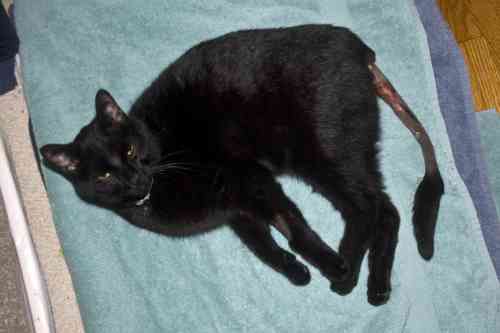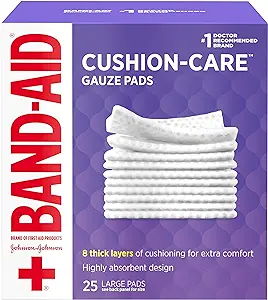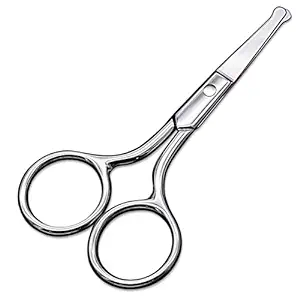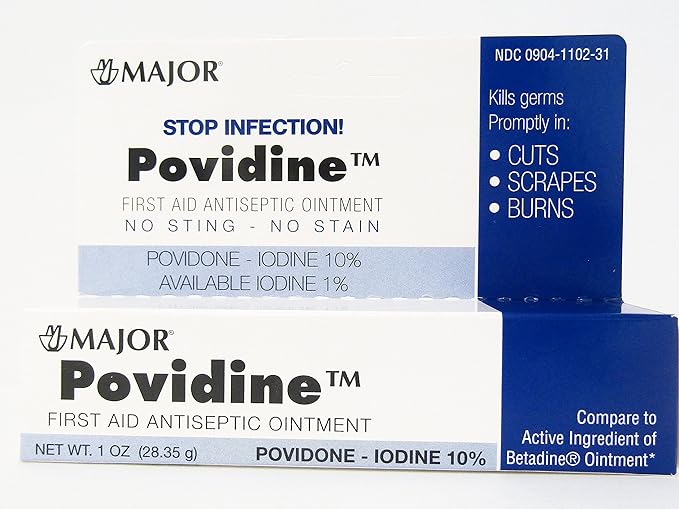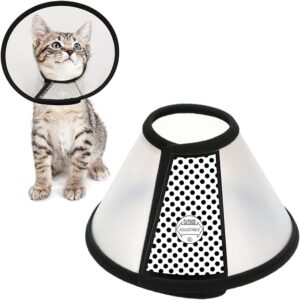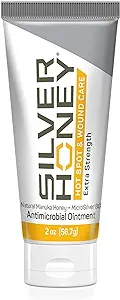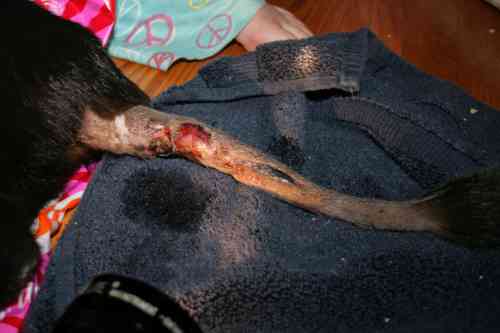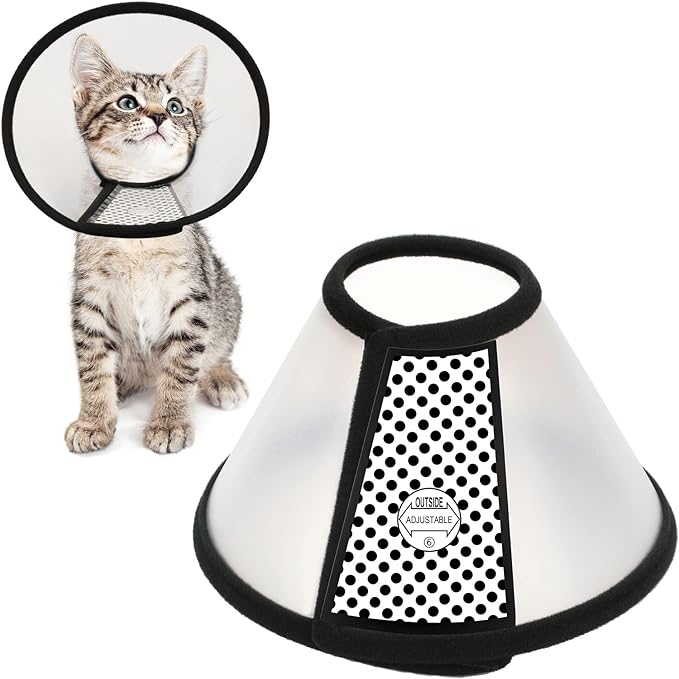A cat with a wound on his tail
Best home remedies
It happens to every cat at some point. A wound on your cat’s tail occurs in many cats. Fortunately, it is not always necessary to visit your vet. In this article we tell you when you should go to your vet if your cat has a wound on his tail. But if that is not necessary, you read here what you can do yourself to help the wound heal quickly. We tell you more about wound cleaning, disinfecting a wound on your cat’s tail and how you enhance wound healing. So read on quickly, in order to find out what you can do about the wound on your cat’s tail in the article below!
When to treat your cat’s tail wound at home?
If your cat has a wound on his tail, you can often treat it at home and let it heal without taking your cat to a vet.
There are different types of wounds. There are superficial abrasions and deeper wounds where the skin is completely cut through. In the case of even more serious wounds, there is also damage to the underlying tissues such as muscles, tendons, nerves and blood vessels. And in an even more severe case, also on his tail vertebrae.
An abrasion is superficial when you see that the skin has been scraped away, but is still in one piece. Some blood may come out. But you don’t see underlying tissues such as muscles and tendons. These types of wounds may be somewhat larger to be able to be treated at home. About 3 centimeters in diameter is usually not a problem.
If the skin has completely been cut through, the wound may be a maximum of a quarter of an inch in diameter so that it can be treated at home. And the underlying tissues themselves may not be damaged. If the wound is larger, it is better to take your cat to your vet.
When to go to the vet with a wound on your cat’s tail?
In case a wound in which the skin is completely severed and larger than a quarter of an inch, it is best to go to see a veterinarian. Muscle tissue and tendons are visible through the wound opening. Usually you can move both wound edges towards each other and you will see that they should actually be one piece. There is often more blood visible with this type of wound. These types of wounds should be no more than a quarter of an inch in size to treat at home. If the wound is larger than that, it is better to have it sutured by your vet. They usually do this under anesthesia. By having it stitched, the wound heals much faster, more beautifully and there is less chance of a wound infection during the healing days.
If there is also damage to the underlying tissues such as muscles and tendons, it is important to check whether the function of the tail is still good and whether any bone tissue is visible. Deeper wounds are also more difficult to clean and kill bacteria. That is why it usually requires a course of antibiotics. And thus a visit to your vet.
And of course it is better to go to your vet if the wound has not stopped bleeding after 5 minutes and the amount of blood that comes out is quite a lot. With an arterial hemorrhage, the blood comes out in pulses. In that case, you should even go to your vet immediately.
Step 1: Cleaning the wound on your cat’s tail
Is the wound on your cat’s tail small enough to be treated at home? Then it is first and foremost important that as much dirt as possible is removed from the wound. There is often some sand or soil in it. It is best to clean the wound on your cat’s tail with gauze compresses that you wet with clean water. You can normally use tap water for this, unless you stay in a country where the tap water is not drinkable. In that case, it is better to use bottled water or at least boil the water for 10 minutes before using it.
Remove as much dirt as possible from the wound with the wet gauze compress. This is especially important if the wound is deeper. Are there any larger objects in there, such as twigs or leaves? Then you can use tweezers. This does not have to be sterile as we will disinfect the wound in the next step.
In many cases, the surrounding hairs stick to the wound. In that case it is better to cut away the hair on the edge of the wound. Keep an edge of approximately one inch. Use sharp hair-cutting scissors with a blunt tip to avoid additional injuries from this cutting. Hairs that fall into the wound must be removed again with a gauze compress.
Step 2: disinfect the wound on your cat’s tail
Does the wound on your cat’s tail look clean now? Then it’s time to tackle the invisible dirt. These are the viruses, bacteria and other infection causing organisms. You can kill these by treating your cat’s wound with Iodine. The ointment is easier when it comes to superficial abrasions. But if the wound is deeper, it is better to use Iodine solution. This is more watery and will therefore seep better into the depths, so it can also do its work in depth. Betadine ointment is somewhat thicker and will not or hardly seep into the depth. Make sure that the wound has an ocher yellow appearance. In that case you have put on enough.
Step 3: Stimulate wound healing
Now that the wound has been cleaned and cleared of all infection-causing organisms, it is now time to allow the wound to heal. The best way to do this is to let the wound air dry. Bacteria like to grow in a moist, warm environment. If you cover the wound, it will remain wet and heat will also be less able to dissipate. By allowing it to air dry you limit the proliferation of bacteria that may end up in it again.
And yes, now explain to your cat how to stay away from that painful tail. Most cats will lick it frequently. An occasional lick won’t hurt, but if your cat licks it more often, it is unfortunately better to put a protective collar on your cat for about 5 days. And yes, your cat hates that. But a wound that does not heal can be fatal for your cat and that is even more sad! So just don’t think about it too much.
In addition to letting the wound dry in the air, it is also best to apply honey ointment to it twice a day. A study done by S. Melek et. al. ensures that bacteria and viruses can multiply even less in the wound and also has a cell division-stimulating, scar-reducing and anti-inflammatory effect. You can use this until the wound is completely healed. But usually about 7 days is also sufficient.
How does the normal recovery of a wound on your cat’s tail proceed?
Under normal circumstances the wound will form a dry crust. Under the crust, new skin will form from the edges and slowly grow towards the center. Granulation tissue will develop in the center of the wound. This is the beginning of scar tissue. The more scar tissue that forms, the less hair will grow back on the newly formed skin in the future. That is why applying honey ointment is also better as it prevents scar formation.
After one or two weeks, the crust will fall off and the skin will be closed again. The skin will then continue to recover and improve. Initially your cat’s body created more blood vessels to allow the wound to heal, but these will have to be cleaned up later. The redness of the skin will still be visible in the first weeks to months, but will diminish over time. And scar tissue will also take on a slightly different appearance over the coming weeks.
What problems should not arise during wound healing?
The wound should not remain wet. The wound should be nice and dry after a day. If this is not the case, an infection has probably occurred in the wound. In that case, it is extra important to keep applying that honey ointment. Is it still not dry after two days? Then it is better to use iodine ointment. This has a less effective effect on healing the wound, but it does have an antibacterial effect. And as long as there is still an infection, the wound will not heal anyway. That is why in this case it is better to rub the wound on your cat’s tail with iodine ointment. Make sure that your cat can’t lick this, otherwise it will cause diarrhea.
His tail should also not become much thicker than it is after a day. If he does get swollen, an abscess may have developed under his skin. This means that bacteria is multiplying under his skin and his body attacks it with pus cells. The result is a cavity filled with pus. This is very painful and your cat usually feels a little sick, wants to eat less and may even have a fever. His tail usually hangs limp.
Good luck!
Hopefully the wound on your cat’s tail will heal quickly and smoothly. Then he can quickly play and enjoy life again!

